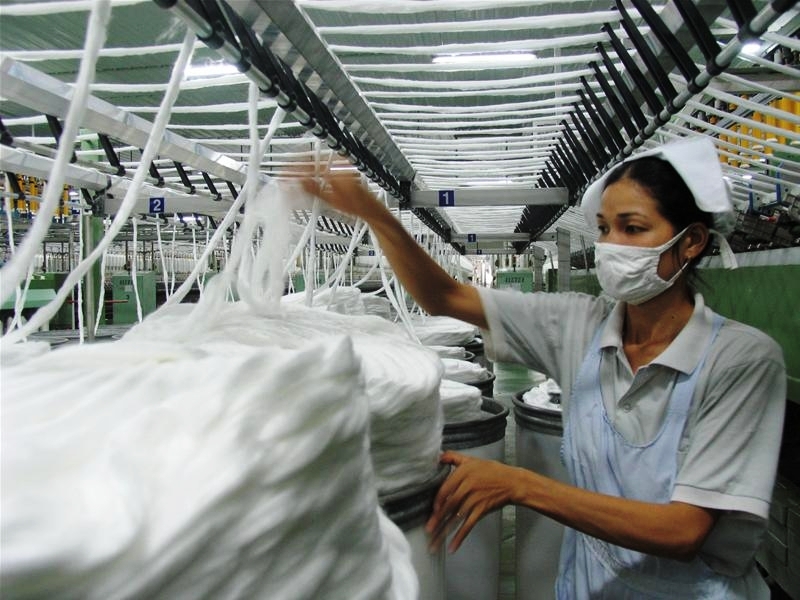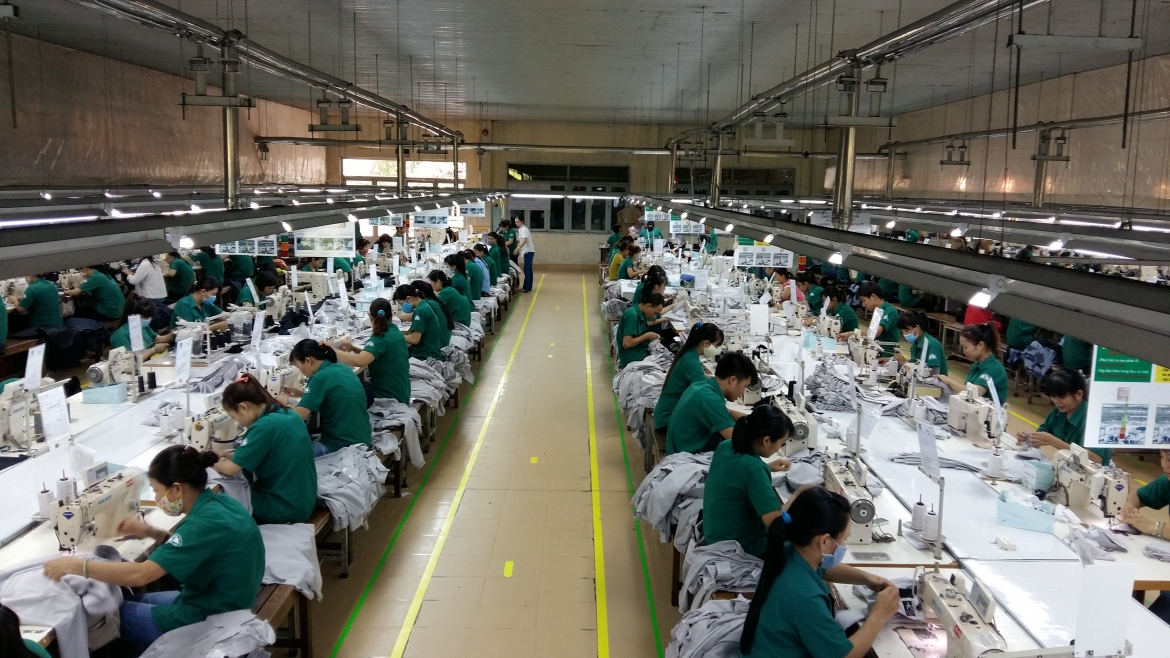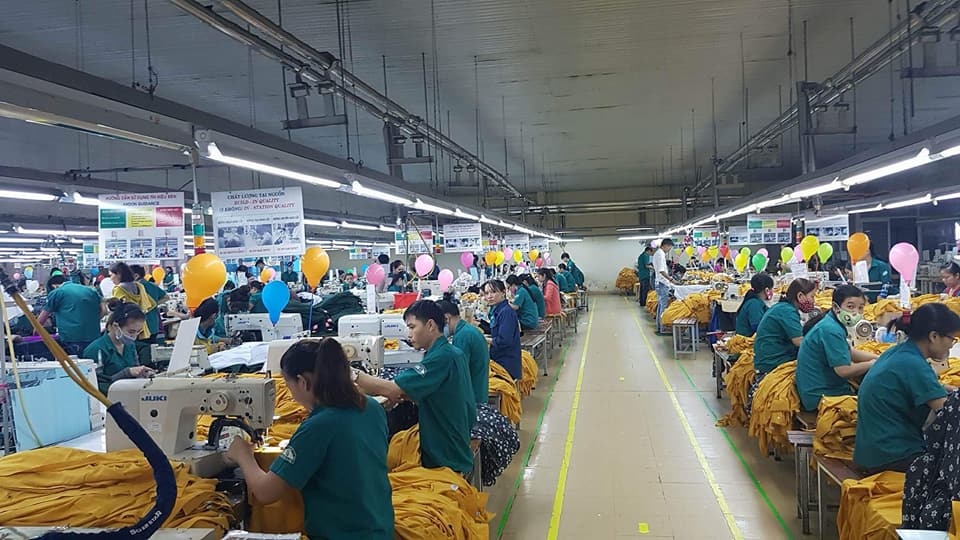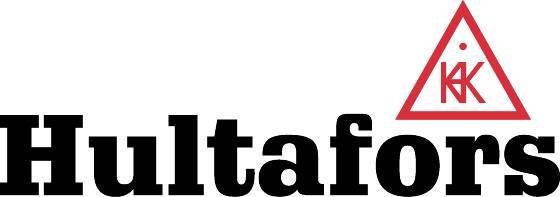Vietnam Textile and Garment Industry With Domestic Market
The textile and garment industry is one of the key industries in our national economy. It plays an important role in the national economy, which provides an indispensable commodity in the daily life of the people.
The textile and garment industry is one of the key industries in our national economy. It plays an important role in the national economy, which provides an indispensable commodity in the daily life of the people.

The demand for labor in the textile and garment industry is huge. Each year, the textile and garment industry generates around 2.2 million jobs for workers. Thus a large number of laborers contribute to society, contributing to the income of workers. Export turnover of garment and textile industry in the past years has always ranked second in all export products (after oil export turnover), earning big foreign currency, contributing a considerable part to State budget. Vietnam's textile and garment industry has favorable conditions for development such as young and abundant human resources, large domestic consumption market (more than 80 million people), and potential market is relatively large Overseas, our country is well suited for developing natural textile resources. When Vietnam joins the World Trade Organization (WTO), it creates more favorable conditions for Vietnam's textile and garment industry to develop. Member countries in the World Trade Organization have abolished export quotas and tax incentives for the Vietnamese textile and garment industry to enter the domestic market.
After more than 20 years of continuous growth at an average rate of 20% per year, by 2011 textile and garment has become one of the largest economic sectors in the country in terms of scale and stature with 4,000 enterprises, Reaching USD 20 billion, accounting for 15% of GDP and becoming the leading industry in export turnover, reaching USD 14.5 billion, accounting for 18% of the total export turnover, making Vietnam the top five textile and garment exporters. world.
At the same time, Vietnam textile and garment has confirmed its position on the international market when it is present in hundreds of countries, conquering difficult markets such as USA, EU, Japan, Korea ... Despite the general perception, the world and domestic economy will continue to face difficulties in 2012 and 2013, but with the internal strength and efforts of enterprises, the textile and garment industry in Vietnam is expected to grow. At 25% this year, sales are expected to reach $ 25 billion, with exports expected to reach $ 19-19.5 billion. In the period 2016-2020, the textile and garment industry will develop in depth, reach the consumers by taking initiative, towards higher production methods such as ODM, OBM, Reduce the amount of imported raw materials to add value
Besides developing the export market, in the past year as well as in the coming time, the textile and garment industry has always oriented to penetrate into the domestic market. The difficulties in export in the past year as well as in the following years, has led many businesses to restructure their production and business activities, invest strongly in the domestic market. Attempting to compete with exporters for the shrinking market segment and boosting domination of the domestic market is a successful strategy for most textile firms.
Domestic market, considered as a salvation of many garment enterprises during the economic crisis. In 2011, although the economy has many difficulties, the revenue from the domestic market of textile and garment enterprises still grows quite well. According to the report of the Ministry of Industry and Trade, the revenue from domestic market of Vinatex companies is estimated at 17,200 billion dong, up 15%.
In 2011, although people have to tighten their spending, the industry still has good growth. This proves that textile products have a firmer footing in the domestic market.
In 2011, "Made in Vietnam" textiles products continue to be selected by consumers. A recent study by Niesel, a company that provides information on measuring media and market indicators, found that 90% of respondents in Ho Chi Minh City and 83% in Hanoi said they had Can or will definitely buy more Vietnamese goods.
The reason consumers return to domestic consumer products is that they include: reasonable price, diversity, promotional services, good warranty, and most importantly, the product that guarantees User health than Chinese goods.
In 2012, Vinatex's revenue target for domestic market is set at 18-20%. Distribution network of the Group and member units have been expanded to provinces and cities with more than 3,445 points of sale at agents and shops; 60 supermarket Vinatex - mart, Trade Center. With the strategy of developing the domestic market, the corporation's enterprises have actively participated in such activities as bringing goods to the countryside, fairs promoting textile products.
With the accumulated experience in 2011, in 2012, the textile and garment industry will promote the development of domestic market. The Textile Association recommends businesses in the industry to understand the tastes of each region, listen to the opinions of people to gradually improve the product to suit and segment the market for long-term business purposes. And sustainable.
| Currency | Buy | Sell |









































